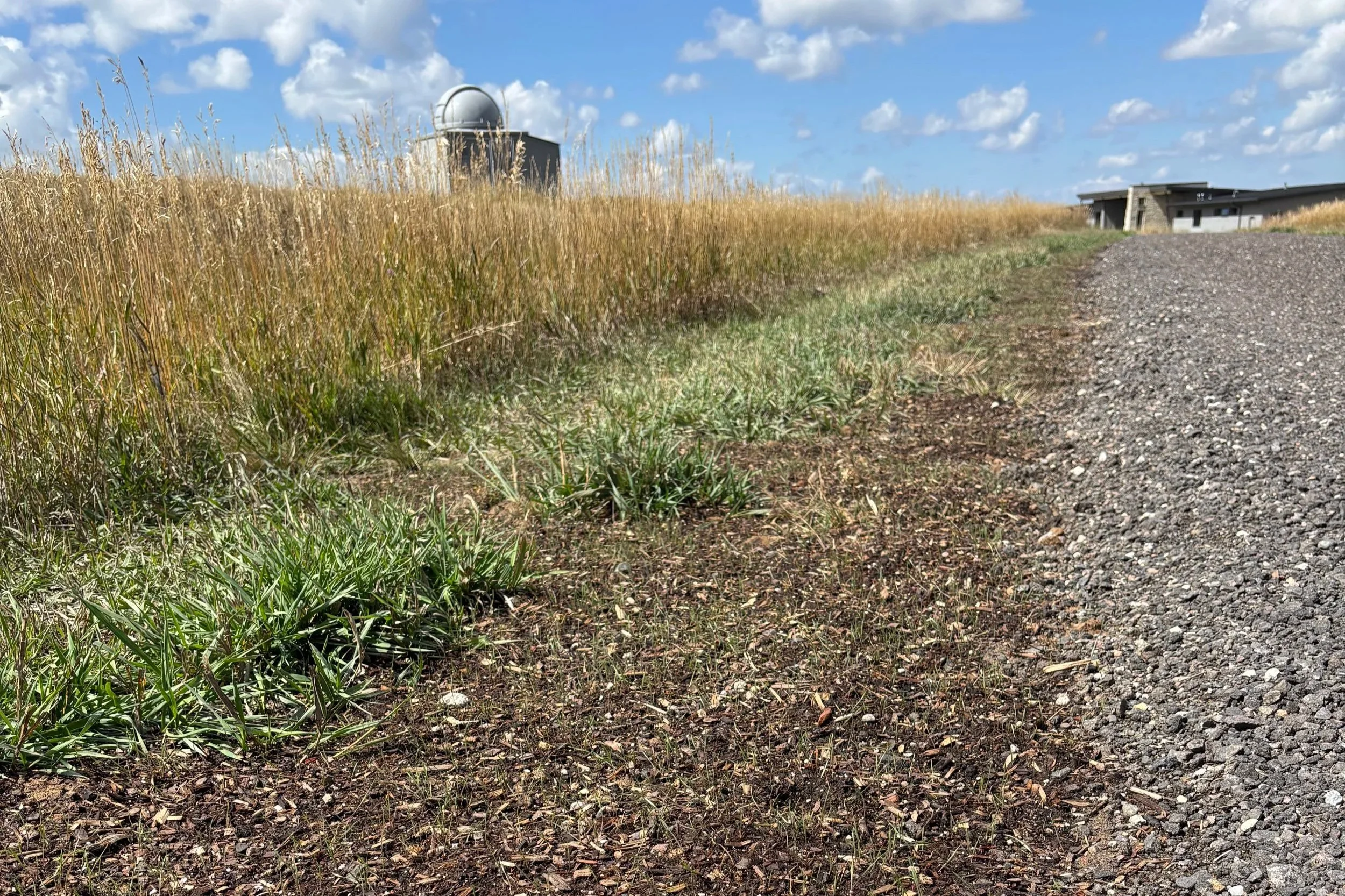6 Steps to Help Financial Change Take Root, and Last
Can you see the soft green haze?
My husband has been trying to grow grass in a stubborn area of ground for years. He tossed out seed and watered faithfully. Nothing grew.
This fall, it’s different. There’s a soft green haze of baby prairie grass. Woo-hoo! It’s the beginning of what he’s been hoping for all along. It’s taking root.
What changed? He didn’t just toss out more seed and cross his fingers. He changed the soil.
And as we’ve been watching this patch finally come to life, it struck me how much it mirrors what happens in money coaching, and how much it connects with the story I shared last week.
Growth doesn’t come from “watering harder.” It comes from preparing the ground, layering in what’s needed, and sticking with it long enough for roots to form.
Here are a few steps he took in his grass-growing process. If you want to jumpstart change, here are some steps you can try yourself.
1. Sprout a Seed
Before planting, my husband sprouted the seeds in a bucket.
Try this: Write down one money struggle that feels most painful right now and one hope you’d love to see instead. That hope is your seed.
2. Rake the Soil
He raked the old soil, breaking it up and making space for something new.
Try this: Shake up an old routine that doesn’t serve you well, like always paying just the minimum on a credit card or avoiding looking at a bill. This week, dig at it a little: pay even a small amount extra, or open and read one statement. The act of disrupting that hardened pattern creates space for something new.
3. Add Conditioner
He worked in a soil conditioner to give those seeds a chance.
Try this: Make a new commitment to change, even if you don’t fully believe in it yet. That intention is a conditioner. It softens resistance and gives your new step room to grow.
4. Protect with Topsoil
He covered the seeds with rich topsoil so the tender growth wouldn’t get washed away or blown by the wind.
Try this: Add one protective system. It might be a boundary with yourself, like no late-night browsing on Amazon. Or a boundary with others, like limiting dining out with co-workers to once a week. Or it could be an automatic transfer into savings. Small systems create shelter for change.
5. Fertilize
He added fertilizer to boost growth.
Try this: Celebrate one win, no matter how small. Paid a bill on time? Wrote down your expenses? Made a deposit into savings? Acknowledge it. Celebration reinforces growth.
6. Water Regularly
And finally, the watering. Daily attention.
Try this: Pick one rhythm to keep. A weekly money check-in with your partner. Five minutes of journaling about spending. Or tracking your expenses daily.
Intention, Nurture, and Time
Change doesn’t happen overnight. But if you want it, you can absolutely achieve it. It starts with intention. These six steps can be your launching pad. And with nurture, time, and guidance, you can win at this.
In coaching, all these pieces come together: seeds sprouting, soil broken up, new systems layered in, consistent attention. Some weeks feel thorny. Some feel like nothing’s happening. And then one day you realize the green haze is spreading.
Your journey isn’t a quick fix. Whether you do it on your own, in a group setting like Wealth Together (a year of walking side by side) or in private coaching (at least six months), the process needs time to grow, to take root.
And that seed? That’s your hope. Don’t lose that seed. Take action when it’s right for you.
Here’s a recent example of what that can look like:
🎙️PODCAST SPOTLIGHT
I recently joined my clients Davon & Akira, on the Couples Connect Podcast, with Kevin & Tanya. Although we didn’t use the language “soil,” we did indeed dig into how couples can change the “soil conditions” in their financial life—for new growth to actually take root. I’m excited about their future!
Want to enrich the “soil” for your money talks? Take the Money Talks Quiz and get a free resource with starter tips to grow on together.
Want money talks to feel easier, not tense? Take the free Money Talks Quiz and discover your couple’s communication style with money.
You’ll get personalized results and a free WealthTalk Starter Kit to help you start better conversations today.


